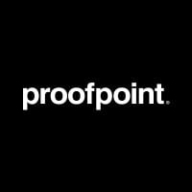

Proofpoint Email Protection and Microsoft Defender for Office 365 are leading competitors in the email security category. Based on feature strengths, Proofpoint appears to have an edge due to its superior filtering capabilities and ease of use.
Features: Proofpoint Email Protection includes robust anti-phishing measures, business email compromise protection, and effective spam and malicious content filtering. Its URL scanning and sandbox environment are key strengths. Microsoft Defender for Office 365 offers comprehensive security integrated within its ecosystem, providing anti-phishing and real-time threat analysis.
Room for Improvement: Proofpoint could enhance integration capabilities and reporting functions and is considered expensive by some users. Microsoft Defender for Office 365 could improve threat visibility and detailed reporting and faces challenges with deployment complexity and alert customization.
Ease of Deployment and Customer Service: Proofpoint supports diverse deployment options, praised for its efficient process and responsive support. Microsoft Defender offers similar deployment methods with unique integration within Microsoft's platform, though users seek improved support and comprehensive documentation to navigate its extensive features.
Pricing and ROI: Proofpoint is seen as costly, especially for SMBs, yet provides strong ROI by mitigating threats. Microsoft Defender is also perceived as pricey but potentially offers increased value through Office 365 package bundles, despite pricing complexities for smaller enterprises.
It has also decreased our time to detection and response by about 15 to 20 percent.
Overall, cost of owning and operating our system goes down.
It's hard to quantify the return on investment we've seen from Microsoft Defender for Office 365.
Over the past two years, there have been no critical problems.
we opened tickets, and they typically resolve them quickly.
Customer service and support have been fantastic.
I am familiar with the granular policy control feature of Proofpoint Email Protection, and I find their support excellent for modifying those policies.
We have never faced scalability problems, and Microsoft manages it effectively.
Microsoft Defender for Office 365 scales transparently for us, as we grew from 1,000 users to 3,000 users, and we didn't notice much difference.
Proofpoint is scalable for multi-site organizations with thousands of users.
The solution is stable, as we have been using it for the past two years.
I would assess the stability and reliability of Microsoft Defender for Office 365 as very stable, with barely any issues.
Overall, the stability and reliability of Microsoft Defender for Office 365 are good.
The main area for improvement is simplifying the implementation and rollout process.
Microsoft could improve by offering recommendations for domain spoofing attacks, especially scenarios where DNS records like SPF, DKIM, and DMARC are not properly published.
There is a different console for different things; I just want one consolidated console.
Proofpoint could expand its phishing detection capabilities to improve its efficiency.
More security could be implemented.
I may advise Proofpoint to adjust marketing solutions based on each country.
We've likely saved 30% of costs.
Money-wise, it is a part of the Office 365 suite, making it slightly more expensive compared to Trend Micro.
Microsoft is quite affordable with a lot of features available for any size organization.
Customers pay around $90,000 yearly for a 1,000-user organization, with the subscription license being the main expense, apart from implementation fees.
Additional costs do come in, but it enhances security.
It ranks the threats and allows us to prioritize those hitting us the hardest, such as email threats.
It provides end-to-end visibility on email threats such as phishing, extending beyond Exchange Online Protection.
The value of the DLP feature is significant to us because we have internal data, sometimes sensitive, and the users may not always be aware of security and privacy, which might lead them to send out information mistakenly to external parties.
The main feature I find most effective is that Proofpoint Email Protection scans emails and quarantines the doubtful ones.
The most beneficial feature of Proofpoint Email Protection is mostly spam filtering; it was very efficient, and we were very happy with the functionality as only relevant emails were allowed for mailboxes.
I appreciate that it's the industry leader, and its firewalling is very easy to manage and implement.
| Product | Market Share (%) |
|---|---|
| Microsoft Defender for Office 365 | 27.6% |
| Proofpoint Email Protection | 21.0% |
| Other | 51.4% |




| Company Size | Count |
|---|---|
| Small Business | 23 |
| Midsize Enterprise | 8 |
| Large Enterprise | 27 |
| Company Size | Count |
|---|---|
| Small Business | 21 |
| Midsize Enterprise | 13 |
| Large Enterprise | 17 |
Microsoft Defender for Office 365 is a comprehensive security solution designed to protect organizations against advanced threats in their email, collaboration, and productivity environments. It combines the power of Microsoft's threat intelligence, machine learning, and behavioral analytics to provide real-time protection against phishing, malware, ransomware, and other malicious attacks.
With Microsoft Defender for Office 365, organizations can safeguard their email communication by detecting and blocking malicious links, attachments, and unsafe email content. It employs advanced anti-phishing capabilities to identify and prevent sophisticated phishing attacks that attempt to steal sensitive information or compromise user credentials.
This solution also offers robust protection against malware and ransomware. It leverages machine learning algorithms to analyze email attachments and URLs in real-time, identifying and blocking malicious content before it reaches users' inboxes. Additionally, it provides advanced threat-hunting capabilities, allowing security teams to proactively investigate and respond to potential threats.
Microsoft Defender for Office 365 goes beyond email protection and extends its security features to other collaboration tools like SharePoint, OneDrive, and Teams. It scans files and documents stored in these platforms, ensuring that they are free from malware and other malicious content. It also provides visibility into user activities, helping organizations detect and mitigate insider threats.
Furthermore, this solution offers rich reporting and analytics capabilities, providing organizations with insights into their security posture and threat landscape. It enables security administrators to monitor and manage security incidents, track trends, and take proactive measures to enhance their overall security posture.
Proofpoint Email Protection provides powerful filtering against spam, phishing, and malware, leveraging effective threat detection and blocking capabilities. This solution integrates smoothly with platforms like Office 365, offering a user-friendly dashboard for seamless operations.
Proofpoint Email Protection focuses on email security, ensuring protection against phishing, malware, and spam. It includes features like URL scanning, anti-phishing, anti-virus protection, and sandboxing for comprehensive threat analysis. Its advanced analytics through TAP and TRAP, along with strong integration abilities, make it appealing for handling email threats. While scalability and ease of deployment are advantages, challenges such as integration in complex environments, the cost, and limited local support require attention. Enhancements in search functionality, email encryption, and improved phishing detection are also needed.
What are the key features of Proofpoint Email Protection?Industries adopting Proofpoint Email Protection include finance, healthcare, and education sectors, which benefit from its robust email security measures. Educational institutions prioritize safe communication for staff and students, while healthcare organizations focus on protecting sensitive patient data. Financial services benefit from preventing data breaches and fraud through advanced threats management.
We monitor all Secure Email Gateway (SEG) reviews to prevent fraudulent reviews and keep review quality high. We do not post reviews by company employees or direct competitors. We validate each review for authenticity via cross-reference with LinkedIn, and personal follow-up with the reviewer when necessary.